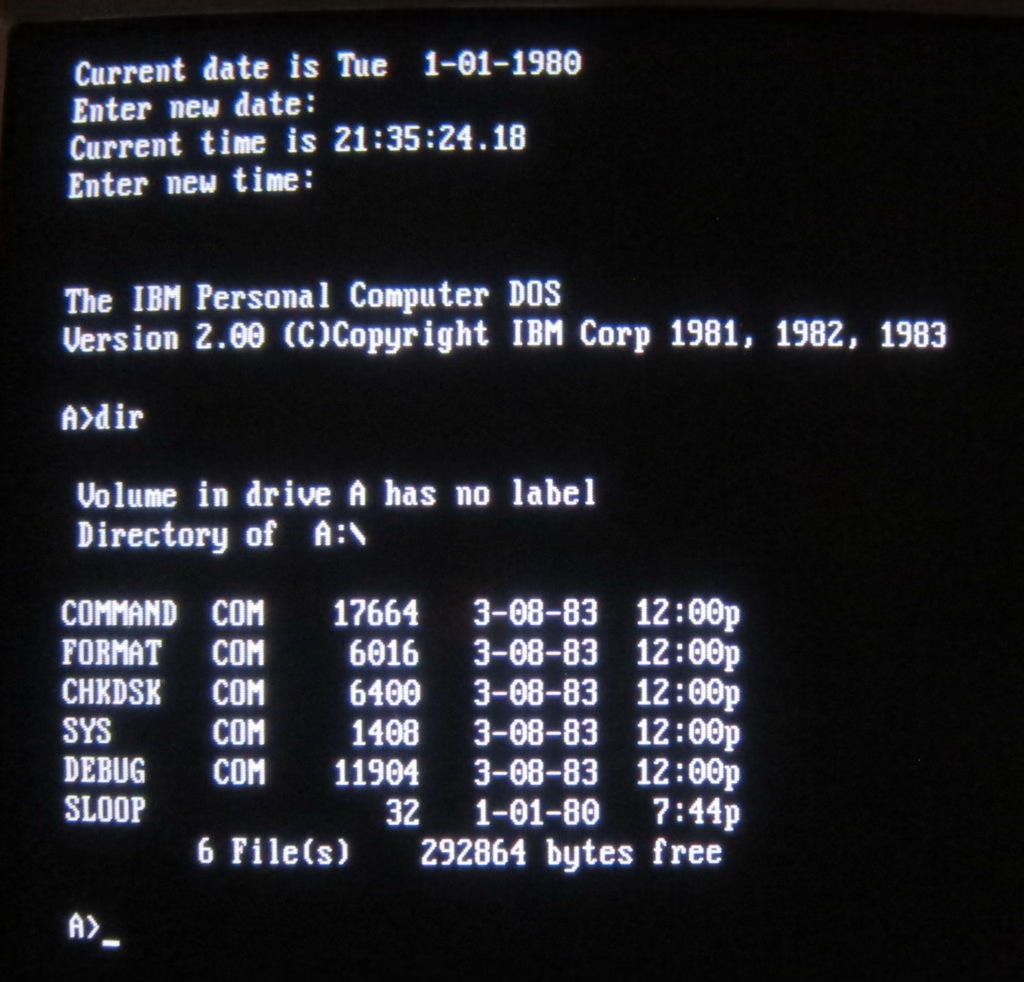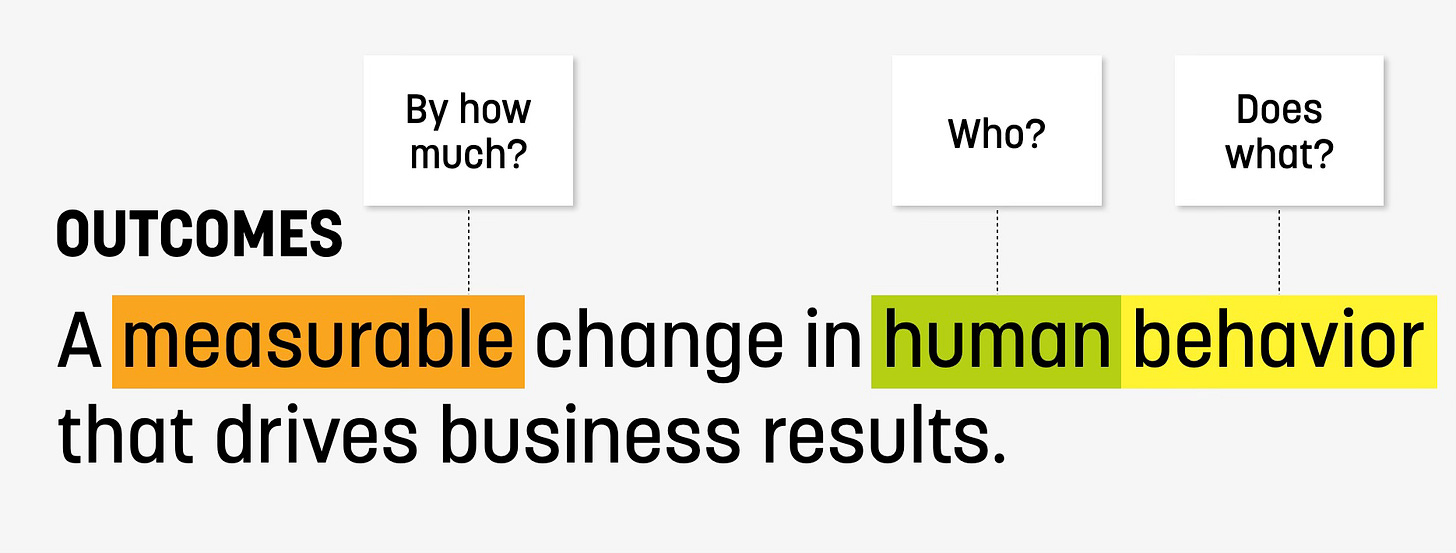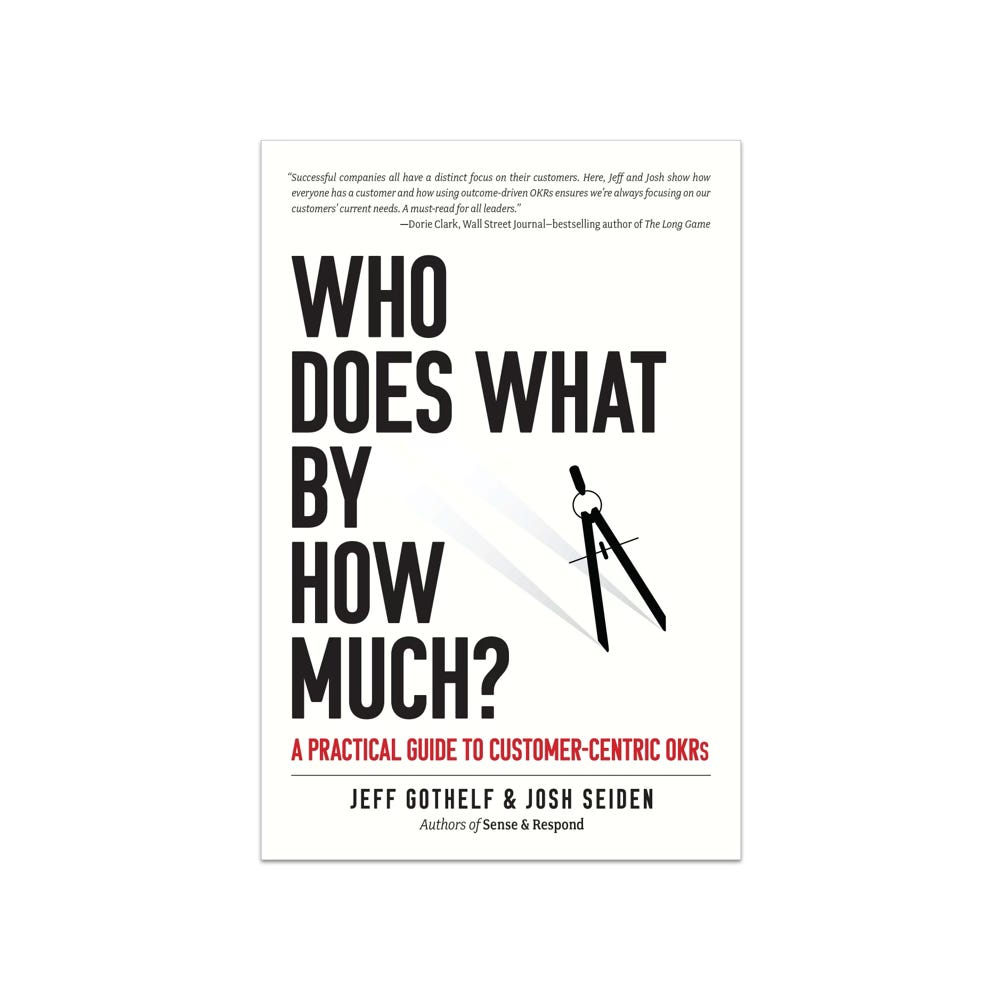In the summer of 2022, when Jeff Gothelf suggested that we write another book, this one about OKRs, my first reaction was no. Hell no.
I didn’t see how OKRs related to my work, and more to the point, I felt that the world didn’t need another book about them.
Reader, I did write that book.
Not only that, last week an old colleague said to me, “You’ve really become the OKR Guy, huh? That’s all I ever see you post about.”
Sigh.
So how did this come to pass? Well, let’s just say that I changed my mind about OKRs. And maybe you should too.
Putting People At The Center
My work has always been about finding ways to bring people to the center of the technology conversation. I started my technology career selling computers at retail—this was in the first years of the personal computer, the days of MS-DOS. I saw first-hand how complex and baffling computers were. People needed expert sales people to figure out what to buy, and they often need to hire someone to set the damn things up at home.
Everything I’ve done since then has been about bringing the user’s voice into the process of making decisions—about design, about products, about business strategy. In the last decade, I’ve assembled a toolkit of methods to help people, teams, and organizations to that. The tools that I like are simple, practical, and easy to use. They are designed to work in situations where people have limited time, limited attention, and limited patience for theoretical answers. Busy people want practical solutions to the problems they face every day.
It All Starts With Talking To Your Customers
Weirdly, the simplest, most powerful tool is also the one that most businesses resist: talk to your customers. Listen to what they say. Try to understand what they mean. Try to understand what they’re trying to do.
Once you understand that, you can make better decisions about what to work on.
Seems simple right?
Customer Insights —> Outcomes
Well there are a million challenges here, but one of them is that it can be difficult to capture and communicate ideas about customers succinctly. What is the customer trying to do? What do we want the customer to do? Where is the intersection that creates value for them and for us?
To capture and communicate these ideas, I use the concept of “outcomes.” Outcomes are a way of describing goals in customer-centric terms. An outcome is “a measurable change in human behavior that creates value.” You write an outcome with a simple formula: [who] [does what] [how much].
So, when you discover an important thing that your customer is trying to do, and you can help them do that in a way that’s valuable for your organization, then you win.
Again, simple right? Well, maybe, but that’s not enough.
OKRs Create A System Of Outcomes
Here’s one problem. Outcomes work at many levels. For an organization that sells things, your high-level outcome is to sell more things. Who does what by how much? [Customers] [buy our things] [25% more than last year.]
That’s fine, but it’s also really generic. How will we drive that behavior? To do that, you need to break the story down:
Customers find our web site. They find what they’re looking for quickly. They read two or three reviews. They add the item to the cart. They find some complementary items. They add those to the cart. They check out quickly and easily.
Each of those sentences is a potential outcome. And each of those outcomes might be assigned to one team to work on. One team might work on SEO, another might work on site search, another might work on reviews, and so on.
OKRs Align Organizations Around Outcomes
So now, you’ve got a lot of outcomes floating around out there. That means you need a way to coordinate that work. And that, finally, brings us to OKRs. OKRs are a way to align the work of an organization around a high-level goal, while also breaking that goal down in to a very fine level of detail.
This is because good OKRs are built around outcomes. They state a high level goal as an objective (eg: the most impactful SEO ranking operations) and then measure progress towards that goal with outcomes statements (eg: site traffic from search engine users grows by 25%).
Good OKRs Are Built With Outcomes
When I realized that good OKRs require outcomes, that’s when the pieces fell into place for me. And that’s when I gave in to Jeff and agreed to write the book.
Have you read the book yet? What did you think?






